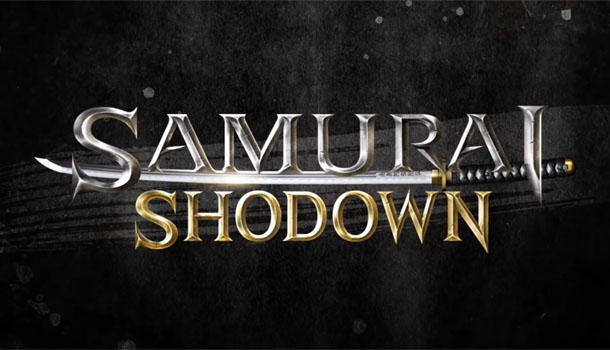So we’ve already seen a few fighting games this year with varying degrees of popularity and like any good fight there is always a new challenger around the corner. Well I’ve got a new one from a company known for one of the hardest fighting series that I’ve ever played. Enter challenger SNK (of King of Fighters fame) with Samurai Shodown for the Xbox One which despite its colorful visuals is one tough fighter to master.
But perhaps a little back history on a series that hasn’t seen an outing here in the States for nearly 11 years. The series in itself got its start back in 1993 and is one that I’ve never played before now. However as a player of KoF myself I did go in expecting some level of challenge in Samurai Shodown. This outing actually takes place one year before the first title so it’s a prequel for as much as that matters. This is easily one of those fighters that fall under the easy to learn but difficult to master mantra for several reasons though.
 As I’ve probably mentioned in the past I am not what you can call an avid fighting game player or a master in any sense of the word. I have however over the years played a wide variety with varying levels of success. Samurai Shodown is easily one of the more unique one that I’ve played though as it does require some strategy as button mashing or spamming the same attack will likely not end in victory. There is a certain level of balancing that must be maintained if a player wants to succeed across all of the modes that Samurai Shodown has to offer.
As I’ve probably mentioned in the past I am not what you can call an avid fighting game player or a master in any sense of the word. I have however over the years played a wide variety with varying levels of success. Samurai Shodown is easily one of the more unique one that I’ve played though as it does require some strategy as button mashing or spamming the same attack will likely not end in victory. There is a certain level of balancing that must be maintained if a player wants to succeed across all of the modes that Samurai Shodown has to offer.
Starting off we have the story mode which takes place in 1787 during the Tenmei Era of Japan. During this time the entire country is catastrophically beset by fire, ruin and famine not to mention a great evil. As is only natural several warriors with their own agendas converge to find and defeat these evils. Players have a roster of 16 characters to choose from to go through a series of fights ending in a final boss fight. For the most part the fights felt pretty balanced but I definitely found the fights to get progressively harder at times as you go.
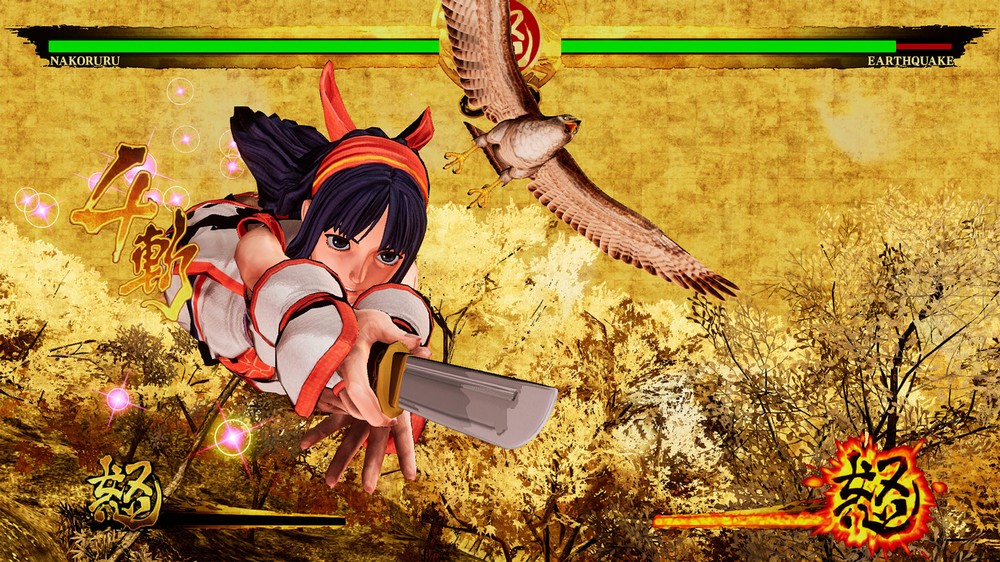 The arcade Story Mode is definitely a great way to get a feel for these characters in a practical sense. I’ve never really liked Practice modes, which this game also has, as they don’t really correlate to actual matches against the CPU or other real players. Much like SNK’s own King of Fighters, Samurai Shodown is a four-button fighter featuring a light, medium and heavy attack as well as a kick. Some basic combos such as the L+M+H attack are conveniently mapped to one of the Xbox’s bumper or triggers. More extensive combos have to be executed the old fashioned way which is a task in itself for me.
The arcade Story Mode is definitely a great way to get a feel for these characters in a practical sense. I’ve never really liked Practice modes, which this game also has, as they don’t really correlate to actual matches against the CPU or other real players. Much like SNK’s own King of Fighters, Samurai Shodown is a four-button fighter featuring a light, medium and heavy attack as well as a kick. Some basic combos such as the L+M+H attack are conveniently mapped to one of the Xbox’s bumper or triggers. More extensive combos have to be executed the old fashioned way which is a task in itself for me.
The thing I like most about Samurai Shodown is that while the basics of player input are the same each character has their own unique skillset that plays well with their personalities. For instance, while most the characters in the game wield blades of various sizes and numbers, Wu-Ruixiang with her almost bookish appearance uses only a shield as her weapon. She shouldn’t be taken lightly though as that shield can do some serious damage if timed right. This of course is if you can keep from getting a third of your health bar cleaved off by the likes of Haohmaru who dons the box art for Samurai Shodown.
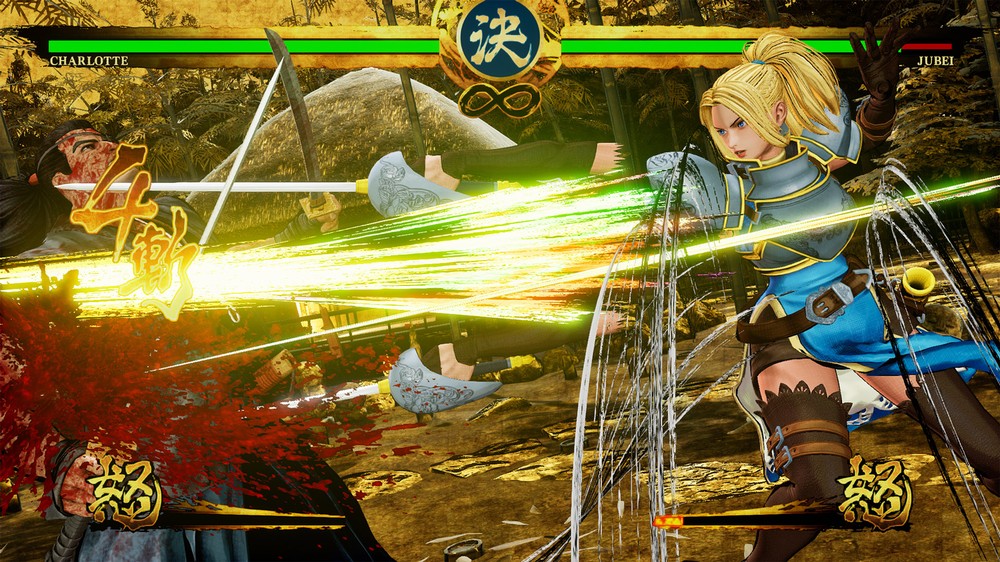 Samurai Shodown definitely has a high risk factor mixed into its fighting as quicker attacks can whittle away at an opponent’s health but it’s just not as satisfying as landing those killer life eating blows. The tradeoff is that the animations for them take multiple precious seconds to trigger and they can even be blocked if your opponent can get their timing right. That can lead to devastating results if they can follow up with attacks or combos as you are left reeling. Light attacks however have their uses as they also build up a rage meter that can then used to execute your lighting strike attack that can be used once per match.
Samurai Shodown definitely has a high risk factor mixed into its fighting as quicker attacks can whittle away at an opponent’s health but it’s just not as satisfying as landing those killer life eating blows. The tradeoff is that the animations for them take multiple precious seconds to trigger and they can even be blocked if your opponent can get their timing right. That can lead to devastating results if they can follow up with attacks or combos as you are left reeling. Light attacks however have their uses as they also build up a rage meter that can then used to execute your lighting strike attack that can be used once per match.
There’s even an added fighting element that can change the game for the better or worse. You can actually disarm your opponents with the right counter and for some characters it’s amusing. Again using Wu-Ruixiang, she can get her glasses knocked off making her stumble around like Velma in a Scooby Doo episode looking for them. Some players can actually use unarmed combat to their advantage if they take the effort. Dropped weapons can be picked back up though so more often than not it is a short handicap.
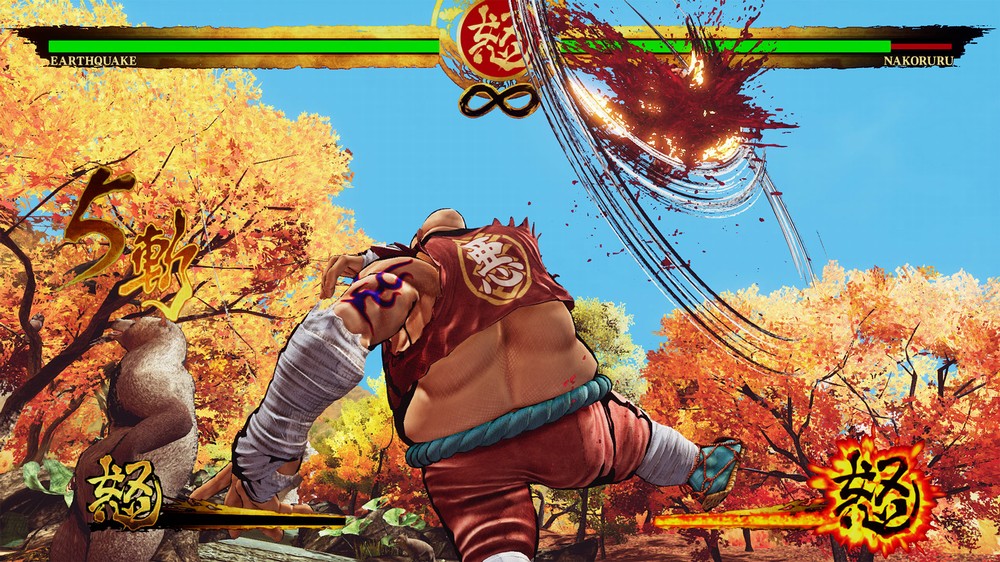 Outside of Story mode, Samurai Shodown has a lot of different modes for folks to dive into. For newcomers like myself there are the tutorial and training modes under Practice to highlight the finer details. Next you have the Online battle mode which during the release was pretty decent for finding matches. The nice part, which I quite liked, is that you can search by different connection ranks, which is vital for an online fighter. Not only can you go up against solo opponents but face off in up to 5v5 team based matches that were actually enjoyable for the few that I got into.
Outside of Story mode, Samurai Shodown has a lot of different modes for folks to dive into. For newcomers like myself there are the tutorial and training modes under Practice to highlight the finer details. Next you have the Online battle mode which during the release was pretty decent for finding matches. The nice part, which I quite liked, is that you can search by different connection ranks, which is vital for an online fighter. Not only can you go up against solo opponents but face off in up to 5v5 team based matches that were actually enjoyable for the few that I got into.
One of the featured modes of Samurai Shodown that I found rather interesting however is the Dojo. This mode while also an online mode is asynchronous one meaning you are going up against the ghosts of other real players much in the same way racers do in the Forza franchise. You can chose player ghosts of varying levels to go up against as well as download them to fight them later. The beauty is that other players can do the same with your ghosts. The more you play with each other 16 fighters the game progressively learns your fight style and uploads it so that others can face off against you. In the long run this mode has the potential to be pretty awesome if you can’t find live matches.
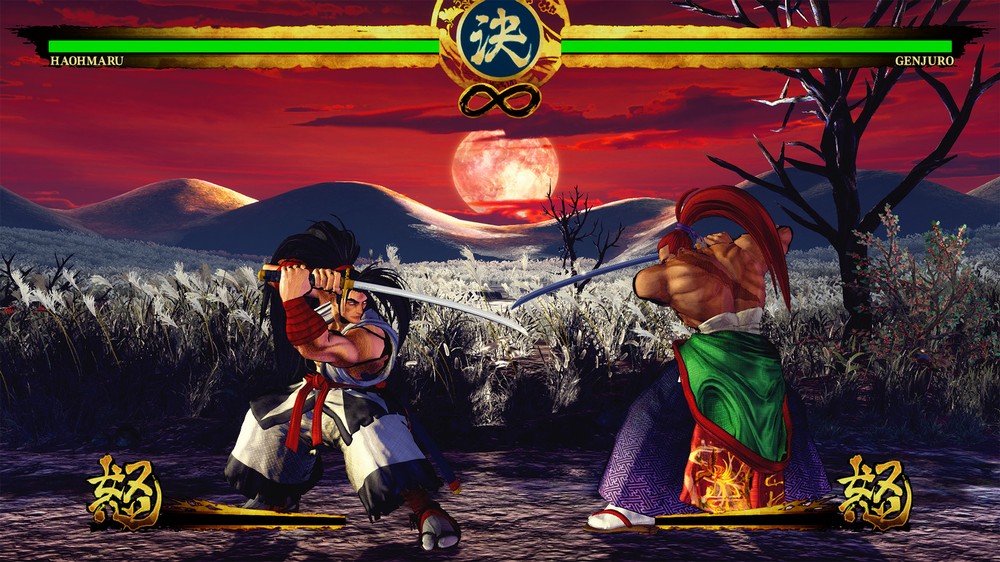 On the offline side of things it’s not a fighting game without a little couch competition in the Battle mode. Here players can head straight into Versus mode to play against their friend and family. You can also set out to defeat as many foes as you can in the Survival, Gauntlet and Time Trial modes. These are by far the toughest modes in Samurai Shodown especially Gauntlet because they are one round fights so it’s best to get some practice in before heading in.
On the offline side of things it’s not a fighting game without a little couch competition in the Battle mode. Here players can head straight into Versus mode to play against their friend and family. You can also set out to defeat as many foes as you can in the Survival, Gauntlet and Time Trial modes. These are by far the toughest modes in Samurai Shodown especially Gauntlet because they are one round fights so it’s best to get some practice in before heading in.
No matter what modes you go into in Samurai Shodown they all share the same stunning visuals. Samurai Shodown is very vibrant and fluid with an almost evolving Japanese ink art style that is breathtaking at times. Even with its art style Samurai Shodown is still deserving of its Mature rating for it use of blood as well as dismembering of bodies. While nowhere as violent as MK11 it may be jarring for younger viewers. There is an option to disable both dismemberment and blood though just in case. That said Samurai Shodown is just as fun to watch as it is to play thanks largely in part to its fluid fighting animations that are showcased in stunning 4K resolution.
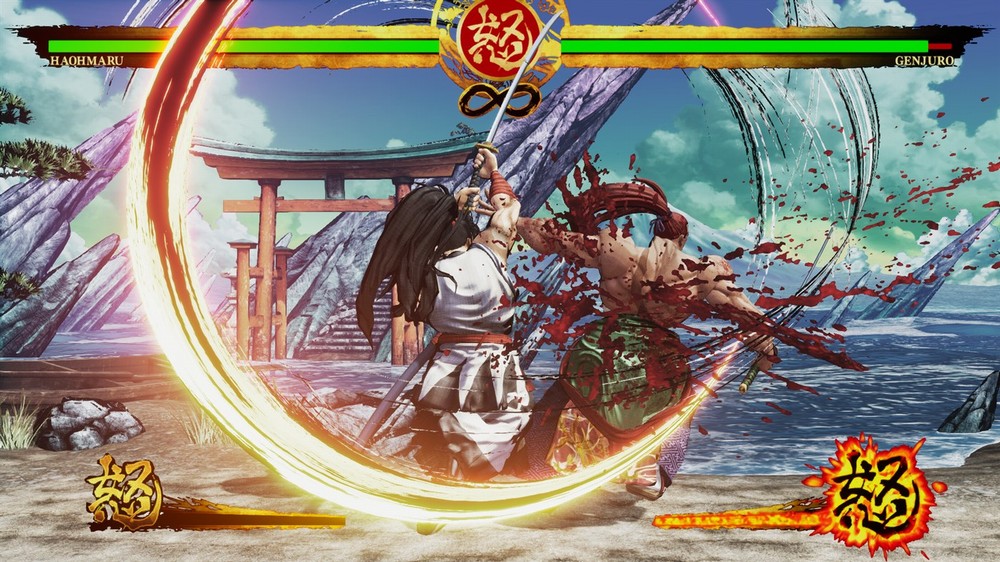 It’s also paired up with some amazing music and voice work that sticks to regions that you visit. The end credit song “Revive the Soul”, while more modern than the rest, I alone could literally listen to for hours. You can hear all of the music found in Samurai Shodown via the in-game Gallery as you unlock them. It’s also interesting to note that Samurai Shodown doesn’t feature much localization outside of menus and subtitles so you’ll be getting a more authentic experience over all with the voice acting and overall musical vibe that it has.
It’s also paired up with some amazing music and voice work that sticks to regions that you visit. The end credit song “Revive the Soul”, while more modern than the rest, I alone could literally listen to for hours. You can hear all of the music found in Samurai Shodown via the in-game Gallery as you unlock them. It’s also interesting to note that Samurai Shodown doesn’t feature much localization outside of menus and subtitles so you’ll be getting a more authentic experience over all with the voice acting and overall musical vibe that it has.
In the end Samurai Shodown was definitely a welcome surprise for me with its visual presentation and an interesting roster of characters. I kind of wish there are a little more in the way of each character’s backgrounds and goals but overall I enjoyed each of them. This was easily a title that will take some time to master but the combat felt really good when I managed to pull off some killer combos. Even if I didn’t, the combat mechanics are deep enough and the combat fluid enough to please both fighting enthusiasts and newcomers alike in the long run. So if you want to try a fighter that’s unlike any that I’ve ever played then check out Samurai Shodown for the Xbox One today.

